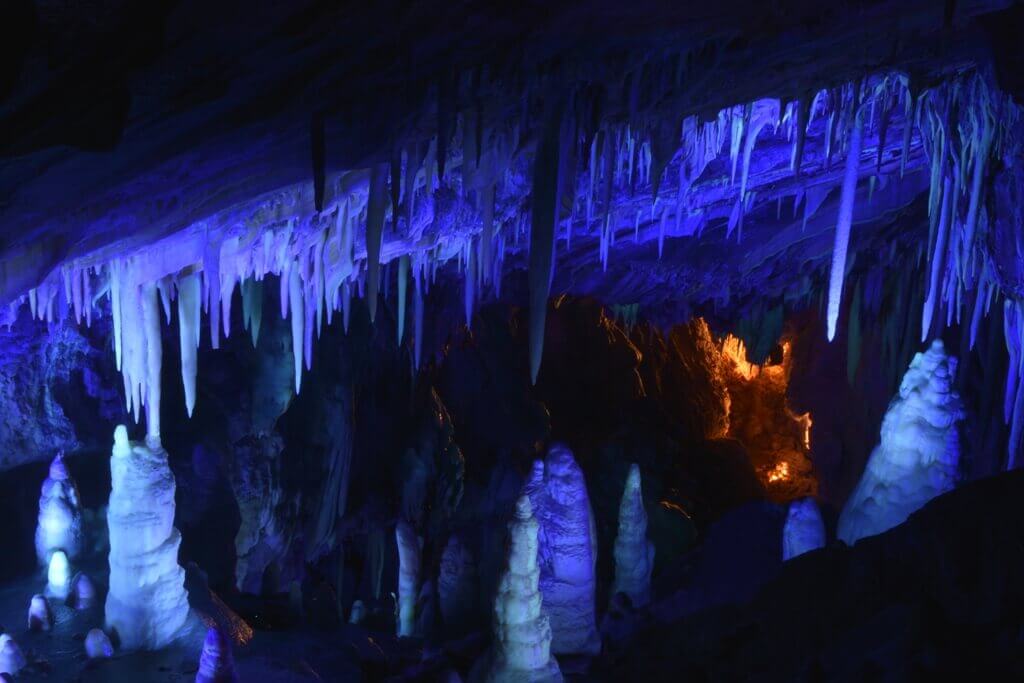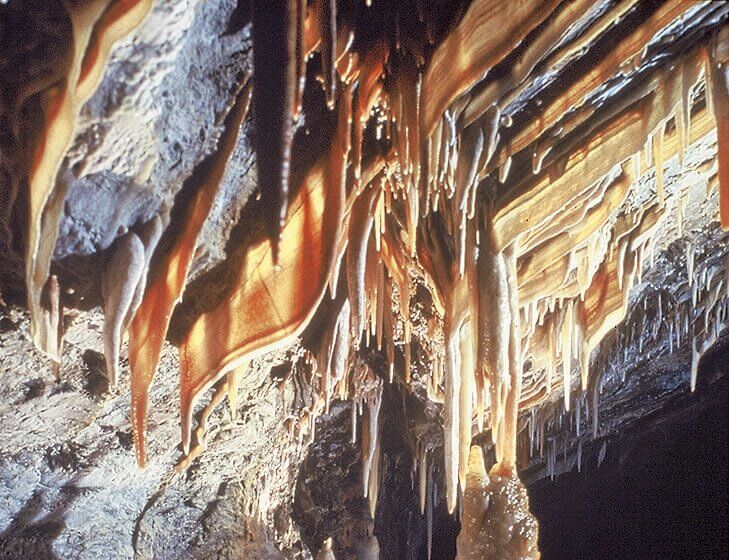Glenwood Caverns Adventure Park is thrilled to be celebrating National Caves and Karst Day on Sunday, June 6. We have fun activities for kids planned and prize giveaways worth big bucks, but most of all we are excited to share our beautiful caves with visitors who may not know what lies beneath their feet.
Once dubbed the “8th Wonder of the World” because of the spectacular formations contained in them, the Fairy Caves and later Glenwood Caverns have been casting a spell on visitors since 1895 when they originally opened. The fascination, then and now, comes from exploring an environment that is hidden from view most of the time. In a sense it is uncharted territory; a landscape so unusual that it has been likened to landing on another planet. Visiting Glenwood Caverns, or other caves for that matter, is an invitation to discover a new world!
National Caves and Karst Day at Glenwood Caverns
 Curious about the world below the surface? Watch this Rocky Mountain PBS episode to learn about the history of Glenwood Caverns, its succession of owners, how the cave was rescued and preserved, and what formations you can expect to see when you take a Glenwood Caverns cave tour.
Curious about the world below the surface? Watch this Rocky Mountain PBS episode to learn about the history of Glenwood Caverns, its succession of owners, how the cave was rescued and preserved, and what formations you can expect to see when you take a Glenwood Caverns cave tour.
To celebrate National Caves and Karst Day, Glenwood Caverns will be hosting coloring contests for kids and giving away Funday Passes (worth $58 each) in drawings. The event is also a great reason to visit Glenwood Caverns and take cave tours to King’s Row, one of the most highly decorated cave rooms in Colorado, as well as see the original Fairy Caves with highlights that include a reflection pond, historic lighting and a stop at Exclamation Point overlooking Glenwood Canyon.
National Caves and Karst Day was inaugurated by the National Caves Association (NCA) in 2017 to educate, promote and raise awareness about both caves and karst. “Every time we give a tour or host a school group, we have the opportunity to teach our guests about cave science and the importance of conservation,” park manager, Nancy Heard said. “On June 6, we’ll dive deeper into these topics and have some fun at the same time.”
10 Fun Cave Facts
Check out these cool cave facts from the NCA and make plans to visit Glenwood Caverns Adventure Park today! Alternatively, research what caves are near you and schedule a tour either on June 6 or anytime this summer.
- A cave is a naturally occurring area or space under the surface of the Earth. Caves are often a system of interconnected passageways created by the weathering of rock.
- Most caves form in karst, which is terrain typically characterized by sinkholes, underground rivers and barren, rocky ground. Forty percent of the drinking water in the U.S. comes from karst aquifers.
 Icicle-shaped speleothems, or rock formations, form as water drips from the cave roof. Stalagmites, which one might trip over, grow up from the floor, usually from the water that drips off the end of stalactites that cling tight to the cave roof. When these two meet, a column is formed.
Icicle-shaped speleothems, or rock formations, form as water drips from the cave roof. Stalagmites, which one might trip over, grow up from the floor, usually from the water that drips off the end of stalactites that cling tight to the cave roof. When these two meet, a column is formed.- Stalactites and stalagmites grow by only a fraction of an inch in a year, and since some are many yards in length, one can appreciate the time it takes for these speleothems to develop. In arid areas with little humidity, it can take a thousand years for a formation to grow one cubic inch.
- We learn a lot from caves. Researchers collect broken formations to track historical weather trends dating back hundreds of thousands of years. Universities partner with privately-owned caves to learn how bacteria can play a role in cancer treatment and the development of new antibiotics.
- No two caves are alike. They can be found in glaciers, on mountaintops, in cliffs by the sea, in molten lava, in the desert and in hillsides.
- Caves are living things. Seepage from groundwater causes water to drip, which keeps formations growing and changing. A drop that falls onto a caver is called a cave kiss and is considered to be good luck.
- Caves are known to have provided shelter to mankind’s earliest ancestors. Cliff dwellings, such as those found in the Four Corners region of the Southwest, were inhabited by Ancestral Puebloans as early as 550 A.D. Fossils dating back to the Ice Age have been found inside caves as well.
- Caves are home to many forms of life that do not exist elsewhere. Troglobites, or cave-inhabiting creatures, are only found in caves and include certain species of shrimp, fish, blind salamanders, pseudoscorpions, spiders, millipedes and beetles.
- There are many ways to experience the subterranean world. Guided walking and wild tours are the most common, but there are caves that offer kayaking, floating or boating on underground rivers; cave diving; wildlife spotting; campouts; concerts; rappelling and more.




